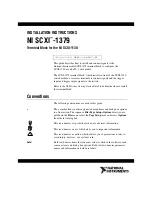
Manual Datafox ZK-MasterIV
The bus line connects the converter and 31 ZK-MasterIV at most in series. Branching is not allowed. The
converter can be connected to the bus line at any place. The maximum total length of a bus cable is 1000
m. The bus line should be laid in trunkings at the ceiling or the wall. In order to connect a ZK-MasterIV
the data line is wired to a Cat. 5 outlet and connected via a RJ45 patch cable or via outlets with terminal
strips via a stub line from the RS485 bus to the terminals. You can connect one Datafox-Bus per RS232
interface at the PC. You can install as many busses as you like also at different PCs. One communication
program per bus is active to operate the communication between the single devices and the central data
server. Because of potential differences a Datafox-Bus line should not be laid between different buildings.
This connection should be mainly realized via the PC network via glass fibre.
3.5.7 Active connection via TCP/IP
An active connection is supported from the firmware version 04.01.05.x on. This function is available for
the main communication TCP/IP, WLAN and GPRS (only from the GSM-module MC55 on)
The connection is always bidirectional full-Duplex. The communication is based on the Datafox protocol
of the MasterIV series.
3.5.7.1 Description
The concept for an active connection contains the realisation of an initialisation of the TCP/IP connection
between the device-software (firmware) and the DLL-software. The connection is always initialized by
the firmware. The link negotiation is done via appropriate commands with the DLL.
Note:
Note: For most providers a TCP/IP connection establishment "from the outside"
is not possible. Therefore the connection has to be established by the firmware.
Either the connection requests are blocked directly by the provider or the IP-address
established by the PC is not the real one of the device.
A connection establishment can be done in TCP/IP networks (also GPRS). The devices do not permit
several connections at the same time. Therefore no other connections must be established in order to
initialize the connection establishment.
In principle, a connection request of a Device to the DFComDLL is processed as follows:
The DLL receives a connection request on a listen socket. The connection administration checks, whether
a port object can be created. After creating a port object, the connection is established and remains for
further applications.
Version: 04.01.07.00
Page
48
www.datafox.de
















































